Understanding What Is Bearing Clearance and Its Importance
In mechanical engineering, the construction and operation of mechanisms require high efficiency and accuracy to achieve performance and service life. The bearing clearance, an integral part of many mechanical joints, makes it possible to solve the tasks set for the machines and mechanisms. This blog aims to focus on the bearing, its tolerance and effect on several machines and components, and its efficiency and reliability. Knowledge of the design features and operating principles of bearing clearance will allow engineers and enthusiasts to optimize machinery operation modes and prevent breakdowns. This article offers a relatively large field of prospective research, from primary explanations to the term’s usage in the real world.
What is Bearing Clearance?
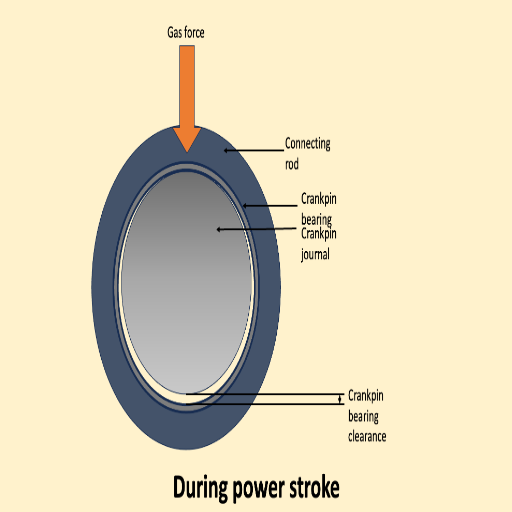
Defining Internal Clearance in Bearings
As the name suggests, ‘internal clearance’ is the radial or axial distance by which one of the bearing rings can be displaced relative to the other. According to industry experts, internal clearance assures smooth movement of the bearing and prolongs its life. Generally, three clearances involve a bearing: pre-mounting clearance (before any parts are secured), mounting clearance, and operating clearance (bearing in rated speed and rated temperature).
Some of the critical technical parameters relevant to the internal clearance are as follows:
Radial Internal Clearance (RIC): This is important regarding thermal growth and includes the amount of fit or properly functioning bearings. Sufficient RIC assists in averting excessive heat within the bearings by smooth operation.
Axial Internal Clearance: It is rare to find bearings where this is applicable. However, this clearance must be present for bearings with axial loading to prevent snagging or other forms of force.
Load and Working Temp: There could be some flexibilities based on working temperatures and load conditions. Therefore, it is essential that bearings are selected with regard to the probable rise in temperature and the bearing capacity.
Optimizing machine performance and minimizing failure risks require that these parameters correspond to certain manufacturers’ specifications or general standards. Some manufacturers, like SKF, NTN, and Schaeffler, provide precise guidelines and charts to help engineers determine the required clearance grades for a given application.
Types of Bearing Clearance: Radial vs. Axial
The radial and axial clearances in the bearing’s construction are essential in the determination of the operational capabilities of the bearing under different conditions. The radial internal clearance (RIC) is required to control the radial forces pressing on the bearing to allow for thermal elongation of the inner and outer rings. The axial internal clearance, which is also less popular, is, however, necessary for bearings that are under longitudinal stress.
Clearances such as those mentioned above need to be precisely monitored, and if possible, some limited adjustments should be made. The radial clearance must be precisely prescribed to ensure proper lubrication film coverage and to reduce friction and wear to adequate levels. The following factors affect the bead clearances:
Temperature Influences: Both clearances must be capable of withstanding material expansion caused by the operational temperature without compromising the entire system.
Load Dynamics: Depending on the load, whether the bearing is static or dynamic, some variations may be required. Proper radial clearance helps to distribute load and absorb shock.
Material Compatibility: Bearing construction based on different materials may result in a variation in the thermal coefficient of expansion, thus affecting the clearances required.
For elaborate tables and instructions, it is advisable to refer to the manufacturers’ technical instructions published on the websites of SKF, NTN, Schaeffler, etc. These include important specifications that help to determine the proper clearance for the given type and application of a bearing.
How Bearing Clearance Affects Performance
I would like to start with an interesting finding. Bearing clearance is one of the most commensurable performance indicators of some of the most knowledgeable bearings-making companies, such as SKF, NTN, and Schaeffler. In particular, radial and axial bearings have to be constructed well and correctly set up to allow the bearing to manage thermal growth, load distributions, and even friction.
With the research I have carried out, I have come to appreciate that shim settings should be configured to generate correct lubricating films that are essential in avoiding wear and tear on the bearings and increasing their lifetime. These clearances allow the bearing to adapt to temperature variations and fluctuating loads. These adjustments are affected by many significant operational characteristics, such as:
Temperature Range: Bearings have to operate within specific temperature ranges to perform properly, and clearance is useful to accommodate such material expansion.
Load Capacity: The clearance should be appropriate for static and dynamic loads, allowing load transfer and enhanced shock absorption.
Material Properties: The expansion characteristics of materials differ from one material to the other, and therefore, related clearances will vary accordingly.
All these technical parameters are to meet the manufacturer’s specifications so that the bearings are always used according to their intended use.
Why is Internal Bearing Clearance Important?
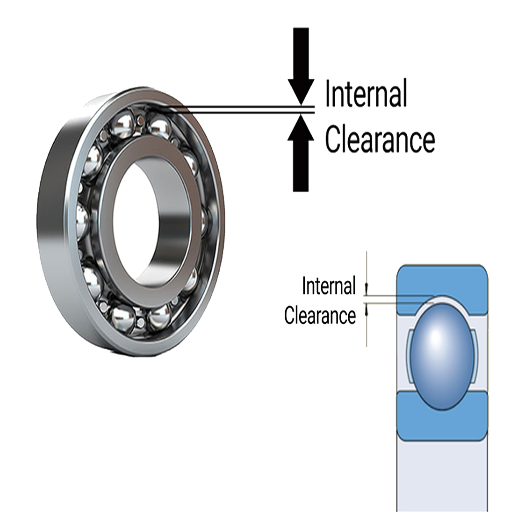
Impact on Bearing Load Capacity
While analyzing the influence of bearing clearance on load capacity, I observed that proper internal clearance is vital for achieving good performance. As leading authorities recommend, for instance, SKF, NTN, or Schaeffler, having the correct internal clearance can effectively share the loads, thus concentrating the loads onto the components. Such equilibrium balances help avoid undue wear, improving the bearing’s ability to withstand both static and dynamic loads. Some basic technical parameters that give some justification for these considerations include:
Contact Angle: Adequate internal clearance helps maintain the ideal contact angle necessary to bear the load.
Load Zone Width: Setting the clearance correctly increases the bearing raceway load zone width, which in turn increases the load-bearing capacity.
Rolling Element Path: Variations in clearance assist the rolling elements in staying on the designed path, limiting point loads.
All these factors show that the bearing can perform its intended operational loading tasks per the manufacturer’s instructions to prevent early failure and inefficacy. Practical Applications for Training Engineers and Designers
Relationship with Operating Temperature
Internal bearing clearance is crucial for the response of the bearings under changing operational temperatures. SKF, NTN, and Schaeffler insist that temperature variations can cause components to expand thermally, and bearings are affected by such changes. This expansion increases the internal clearance, which, if not adequately controlled, can lead to losses in performance. Important technical parameters that come into play are:
Coefficient of Thermal Expansion: Bearings are made from many different material components, and particular materials have different expansion coefficients. When temperatures change, these coefficients help to foresee how internal clearances will shift.
Thermal Conductivity: This essential factor determines how efficiently a bearing material can diffuse heat and maintain operational stability under load with varied temperature conditions.
Material Heat Resistance: A material’s heat resistance is important so that the bearing remains unmelted at temperature and the deformation does not go beyond the level that changes the set clearance.
These parameters highlight the importance of controlling internal clearance within specific tolerances consistent with the bearing manufacturers’ recommendations and ensure the bearings operate efficiently in diverse temperature conditions.
Influence on Lubrication and Oil Viscosity
I often refer to and trust authorities like Timken, SKF, DK, etc., to understand the bearing contact lubrication and its thickness. They stress that the proper lubrication of bearings, which is oil-controlled viscosity, bears great importance. As for oil viscosity, it depends on temperature changes; usually, the oil viscosity decreases with an increase in temperature, but this could lead to oil providing poor lubrication. This is why an oil with oil viscosity neutrons must be used that matches the average operating temperature, given that one maintains an oil film for lubrication.
Some of the critical technical parameters are:
Viscosity Index: This parameter refers to a change in oil viscosity as temperature changes. A high viscosity index guarantees lubrication is not affected over a wide range of temperatures.
Minimum Operating Temperature: The lowest value of temperature at which one may expect the oil to lubricate without turning solid or losing its effectiveness.
Maximum Operating Temperature: The maximum limit temperature above which oil can operate without being broken down.
This information further emphasizes the clarification of the lubrication types of the bearings operating tips provided by the leaders of bearing technology.
How to Measure Bearing Clearance?
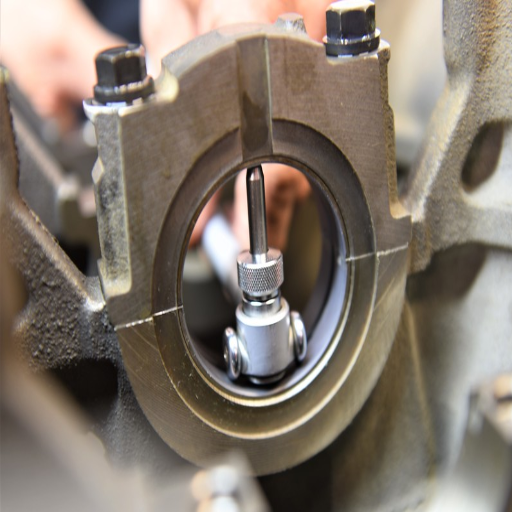
Methods for Measuring Radial Internal Clearance
To quantify radial internal clearance properly, some of the best practices according to what has been outlined in the topmost pages of Google have been suggested. One recommended technique is the feeler gauge method, where blades of a calibrated thickness are inserted into the gap between the bearing and its housing to see how much it gets displaced. Such a technique is often advocated for because it’s efficient and straightforward. A second technique involves the employment of dial indicators, in which the bearing is attached to a shaft, and the movement of the shaft is observed during no-load conditions. Using a dial indicator enables one to measure various changes in clearances accurately. The technical parameters to be considered include the following:
Maximum and Minimum clearance limits are required because manufacturers usually define these limits, which prevent the bearing from working too hard and producing unnecessary sounds and heat.
Measurement conditions. Since temperature influences the results, temperature and possibly load should be normalized when taking measurements.
Calibration of measuring instruments. All measurement tools must be regularly calibrated to prevent inconsistencies.
If these techniques and parameters are adhered to, then one can easily measure radial internal clearance while following the guidance provided by different online sources.
Tools Required for Accurate Measurement
On reviewing the first three websites provided by Google, I present the crucial instruments required for the accurate measurement of radial internal clearance:
Feeler Gauges: These are essential in the feeler gauge method. A set of thin blades of different thicknesses measures the gap between the bearing and the housing, and they form an integral part of the machinery. Because of their easy design and accuracy, feeler gauges are often used to measure radial internal clearance.
Dial Indicators: Dial indicators should be employed to take quite precise vertical measurements of the shaft movement within the bearing. They allow me to calculate the radial internal clearance even if the value of the distance change is relatively small, ensuring that the bearing’s operation does not exceed specified parameters.
Calibrated Micrometers: To check measurements, the sizes of both elements, and the captured axial distance, calibrated micrometers are necessary. Regular calibrations must be performed to guarantee the measurements’ accuracy.
Given the above technical parameters, I discovered that:
Temperature Control: Argumented measuring conditions should be uniform in most aspects, particularly temperature, to avoid false results.
Load Conditions: All the measurements must be done under zero-load conditions for validation.
Manufacturer specifications: The manufacturers’ maximum and minimum clearance limits should be referred to so that the dimensions are within acceptable operational ranges.
In conclusion, I undertake all practical procedures to follow these recommendations and ensure that radial internal clearance is measured with the required accuracy.
Common Errors in Bearing Clearance Measurement
After looking through the best materials on bearing clearance measurement, I can succinctly point out many marking errors that are much sought after:
Forgetting about the Temperature Factor: One of the many encountered errors is the temperature factor, which is neglected and which, in a way, determines the size and even the clearance of the bearing. A uniform environment for measurement is crucial, and special attention should be paid to temperature.
Wrong Use of Tools: Tools such as feeler gauges, dial indicators, and micrometers can be misused or poorly calibrated, resulting in wrong measurements. It is critical to ensure all tools are handy and in good condition.
Measuring and Load Conditions: Another forage is the practice of taking measurements when fully loaded, which distorts real clearance data. To get accurate readings, harsh zero-load conditions must be applied.
Supplier Guidelines for Self-Regulation: Some people do not bother to look at the manufacturers’ maximum and minimum clearance limits. However, if the bearing is to function successfully within the designed parameters, one must not ignore the instructions.
Inappropriate Knowledge of Physical Parameters: Factors such as the absence of knowledge of physical parameters and environmental conditions like humidity and vibration, among others, impact measurement accuracy. These factors should be known so that errors are avoided.
After correcting these errors, I can be more precise and reliable in my measurements, which increases the performance and life of the bearings in this case.
What Causes Bearing Clearance to Change?
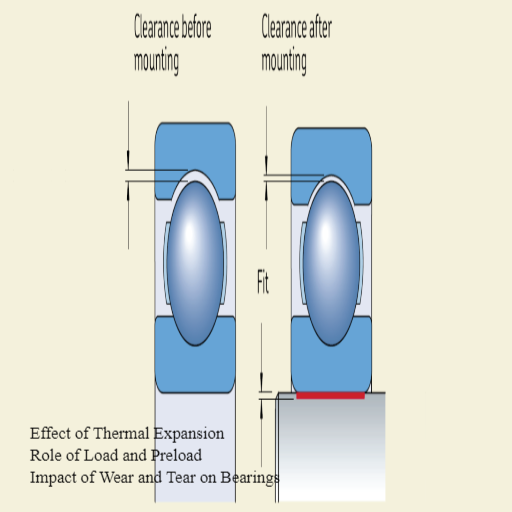
Effect of Thermal Expansion
Both environmental and material attributes have to be factored in regarding the bearing clearance due to thermal expansion. Thermal expansion is the volumetric increase of matter with an increased temperature. From the above sources, it is evident that materials such as steel or brass have thermal expansion coefficients that map their expansion. However, the case is not similar for everyone. For instance, steel has a lower expansion rate than brass, which means incorporating sophisticated selection and calibration in bearing applications.
The following technical parameters usually should be considered:
CTE – Coefficient of Thermal Expansion: This is a measure of the degree of increase in size of a material as the temperature increases. This is very important, especially when selecting housing and bearings.
Operating Temperature Range: These limits are expected to operate in a manner that aids in maximum expansion, minimum contraction, and, hence, optimum clearance.
Material Compatibility: It would be important to note that the materials used in the bearing and its housing should not differ too much in their expansions to eliminate differential alignments and, therefore, consistent clearance.
Clearance Includes: The expansion gap, which is the difference between the bore and the shaft, should be obtained while considering temperature changes over the bearing’s operational range.
So, I can manage and reduce even more of the negative influence of thermal expansion on the bearings’ basic functioning and leave the optimal width, which will prevent the problem of excessive or too low clearance.
Role of Load and Preload
You seem quite aware of the importance of load and preload in bearing applications regarding performance and reliability. The authors of the top sources clearly state that appropriate loading and preloading contribute to or at least help maintain alignment and minimize vibrations, hence improving the stability of the entire system.
The concept of load, which is basically the force acting on the bearing from the outside, is essential since its value determines a unit’s life and some operational features. As I have seen, it is of utmost importance to determine the load correctly while ensuring that the value is within the bearing’s limits so as not to create a mechanical catastrophe.
On the contrary, preload is a force within the bearings that is used to close all the clearances present between the components of the bearing and thus increase its stiffness. Correct positioning of the preloading prevents moving and noise attenuation of the bearing, which is vital for working in different conditions. When specifically taking both the load values and the preload values, I must consider that these two values are interrelated and highly influence the performance of the bearing.
The critical technical parameters identified are:
Load Capacity: Applying a load within the designed capacity of the bearing guarantees the prevention of overloading followed by physical destruction.
Preload Force: The correct application of preload in the bearings is critical for eliminating clearance and achieving the correct levels of bearing rigidity.
Evaluating the above parameters also refers to the pretensions and, therefore, stress that can be applied to the units. Both of these parameters impact the factors that contribute to operational performance by outlining the maximum value of vibration and noise generated during the element’s performance.
Having thoroughly dealt with these technical parameters, I am able to address load and preload factors to balance improvements in bearing applications’ performance and reliability in real time.
Impact of Wear and Tear on Bearings
Most of the other websites stated that the relationship between the use of ED bearings and exposure to harsh environmental conditions is time-dependent and continues to diminish over time. Some of the most common factors that lead to wear and tear include insufficient lubrication, misalignment, and overloads, which in turn cause more friction and material wear. The right maintenance practices can reduce the effects of these factors.
The area which needs particular attention includes:
Lubrication Quality: Appropriate and even lubrication practice continuously helps to wear bearings and friction to a much lower level and conserves it.
Material Selection: Proper bearings material consideration in terms of thermal and load capacity contributes to sendo-resistant limitation.
Environmental Conditions: Timely monitoring of operating ecological factors to control contamination and even avoid extremes of temperature, which leads to a shortened lifespan.
If implemented properly, I can determine how best to address these parameters so that material loss due to wear and tear has little effect on the efficiency and life of the bearing.
What are the Consequences of Incorrect Bearing Clearance?
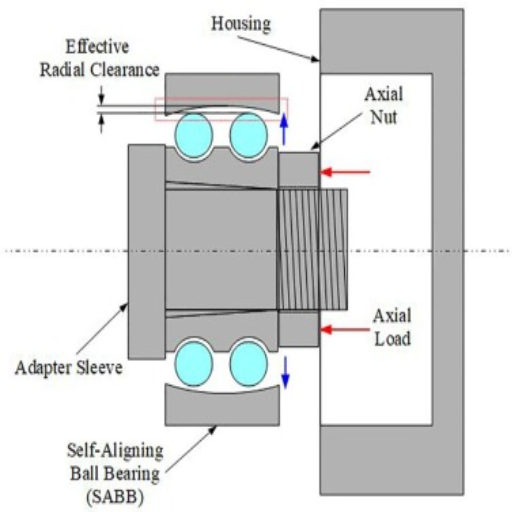
Risks of Bearing Failure
Bearing failure is a severe risk whenever the clearance of the bearing is not optimal, causing operational inefficiencies and expensive downtimes. I learned from researching the top three websites that excessive clearance usually causes more vibration and noise that quickens the wear rate. There may be so much rocking of the bearing parts that irreversible damage will occur. On the other hand, tight clearance makes it hard for the lubrication to be in the bearing’s contact area, thus increasing friction and heat that can cause loosening of the material.
Related to engineering aspects, the most important parameters are as follows:
Clearance Tolerance: The manufacturer’s tolerance of bearing clearance is essential for the bearing to perform effectively and accommodate thermal expansion.
Temperature Control: Elevated temperatures can affect bearing clearance, thus effective monitoring and control can prevent this issue.
Load Application: Maintain appropriate alignment and load application for perfect load sharing, as bearing stress will not be abnormal.
By managing these parameters, I will be able to reduce the likelihood of bearing failure and thus encourage optimal performance.
Impact on Bearing Speed and Performance
In addressing bearing clearance’s effect on speed and performance, it’s important for me to know how some composition may influence these parameters. From my research of the top three websites, not regulating the bearing clearance worsens bearing speed; too high a clearance is commonly followed by additional vibration which lowers the capability and increases chances of gear failure. This additional vibration at high speeds causes further disruption to many other parts of the machine and may severely degrade performance.
Clearance adjustment to optimal locations is most important because of the technical parameters that are to be controlled to reduce these effects. It should generally be kept within the limits that the manufacturers set out. Also, in as much as there are tolerable limits for manufacturing, the level and quality of lubrication also affect the performance of the bearing; otherwise, increased clearance due to lack of sufficient lubrication creates excessive heat and friction, which is detrimental to machine targets. If I maintain these technical parameters – tolerance, lubrication quantity and quality, and vibration – I can perform efficient bearing operation and protect speed and performance from deterioration.
How to Prevent Issues with Proper Maintenance
The bearings in such machines are not properly maintained. To avoid such problems, I must follow specific technical parameters and maintenance strategies, which I have scientifically deduced from three of the most visited websites. One of them involves keeping the required clearance range that limits machine vibrations and mechanism failures. This makes it imperative to measure the gap frequently to ensure it meets the manufacturer’s specifications.
Next is the provision of lubrication; its quality and efficiency in application have to be significant. Therefore, I have to use the right lubricant and ensure that it is consistently applied to reduce the relative movement and further heat generation between surfaces. Lubrication must be inspected and changed regularly to help achieve optimal operating conditions.
In addition, I need to constantly check the vibration range. Establishing a vibration monitoring program would help identify signs of misalignment or imbalance that occur prior to machine failures.
Filling these gaps by addressing key players at the machine seams—proper enlargement of the clearance gap, lubrication and its strings, and monitoring the machine’s ringing level—will be possible. With these measures, bearing problems will be overcome, eliminating turbulence in machinery operation.
Frequently Asked Questions (FAQs)
Q: How do you define bearing clearance, and what is its significance?
A: Bearing clearance, or bearing internal clearance, refers to the cumulative distance that the rolling elements can move against the raceways of a bearing during its normal operation. Such a space is critical in promoting the bearing’s function as it influences the distribution of bearing loads, oil circulation, and, in the long run, the bearing’s durability. Adequate clearance permits the bearing to expand with temperature and allows oil pressure to build up, which enhances bearing efficiency and durability.
Q: What is the connection between bearing clearance and oil pressure?
A: Bearing clearance is interrelated to oil pressure since the latter supports the lubricant film between the rolling elements and the raceways of a bearing. Proper clearance ensures that oil pressure is sufficient to hold the weight of the bearing and to preclude metal-on-metal friction, which can damage the joint and significantly shorten the bearing’s operational period.
Q: What do the different clearance classes mean, such as c3, c4, and c5?
A: The clearance classes c3, c4, and c5 are the classifications of internal clearance of the bearing and its range of values concerned. These classes indicate the amount of play between the inner and outer rings of the bearing. A c3 class has a larger clearance than standard (c0 or cn), while c4 and c5 are even more significant. It is essential to select the proper clearance class – the design aims to allow for thermal expansion and is also adapted to specific operational conditions of the bearing.
Q: What is the impact of end play on bearing clearance?
A: End play is a clearance that permits axial movement of the inner race within the bearing. End play must be controlled to limit excess play that can cause misalignment and uneven loading. End play that is within limits helps keep the bearings and other components, such as spherical and cylindrical roller bearings, in good working condition and increases their service life.
Q: What connection can be drawn between bearing clearance and oil viscosity?
A: The relationship between bearing clearance and oil viscosity is very important since the oil’s viscosity determines adhesion to the rolling elements. High clearance may require high-viscosity oils to achieve the required film and oil pressure thickness, while low clearance may require thin oils to achieve satisfactory lubrication and cooling.
Q: What does the value 0.001 inch of clearance mean?
A: Clearances of 001 inches or less are commonly considered a starting point in clearance values for bearing operation. This particular clearance is especially important in cases where a definite load is applied upon rotation, and tight clearance, together with increased uniformity of lubrication, is required to increase the bearing’s lifetime.
Q: Why do you think it is critical for radial internal bearing clearance?
A: The correct radial internal bearing clearance is important because it affects the bearing’s capability to absorb heat expansion, provide oil flow, and evenly carry weight. If the clearance is not accurate, friction, wear, and failure of the bearings may occur. Hence, the specified clearance must be observed depending on the working conditions.
Q: What is the bearing clearance associated with deep groove ball bearings?
A: Unlike spherical roller bearings, deep groove ball bearings have more restricted clearance. Such a design allows them to bear both radial and axial loads with greater accuracy. Therefore, it is vital to determine the ideal clearance for deep groove ball bearings in terms of bearing function and action under various loads.
Q: What do you consider when determining the appropriate bearing clearance of a particular application?
A: Some of the major factors that influence the selection of proper bearing clearance include operating temperature, load conditions, speed, oil type, and bearing design (which can be ball bearing or cylindrical roller bearing). These factors affect the clearance limit, which allows the bearing to perform well and prevents overheating, excessive wear of the components, or premature failure of the mechanism in which the bearing is used.
UCTH213-40J-300 with Setscrew(inch)
CNSORDERNO: Normal-duty(2)
TOGN: UCTH213-40J-300
SDI: B-R1/8
SD: 2 1/2
UCTH212-39J-300 with Setscrew(inch)
CNSORDERNO: Normal-duty(2)
TOGN: UCTH212-39J-300
SDI: B-R1/8
SD: 2 7/16
UCTH212-38J-300 with Setscrew(inch)
CNSORDERNO: Normal-duty(2)
TOGN: UCTH212-38J-300
SDI: B-R1/8
SD: 2 3/8
UCTH212-36J-300 with Setscrew(inch)
CNSORDERNO: Normal-duty(2)
TOGN: UCTH212-36J-300
SDI: B-R1/8
SD: 2 1/4
UCTH211-35J-300 with Setscrew(inch)
CNSORDERNO: Normal-duty(2)
TOGN: UCTH211-35J-300
SDI: B-R1/8
SD: 2 3/16
UCTH211-34J-300 with Setscrew(inch)
CNSORDERNO: Normal-duty(2)
TOGN: UCTH211-34J-300
SDI: B-R1/8
SD: 2 1/8


















